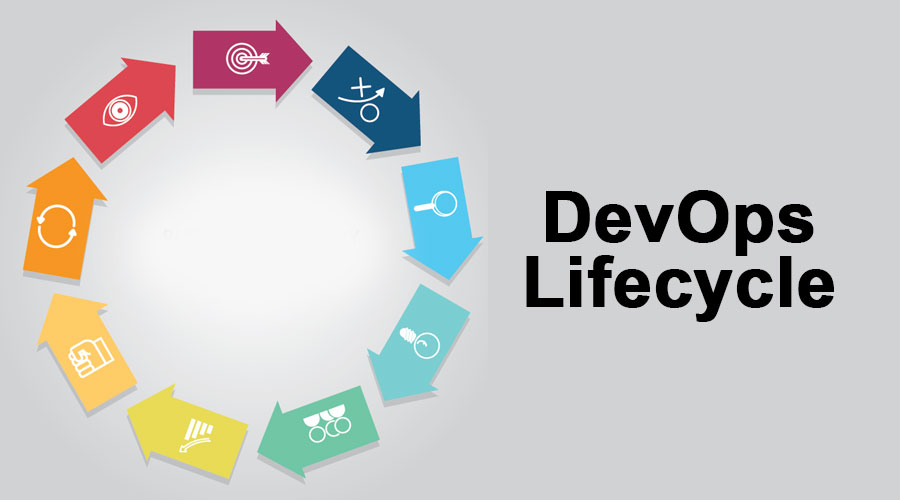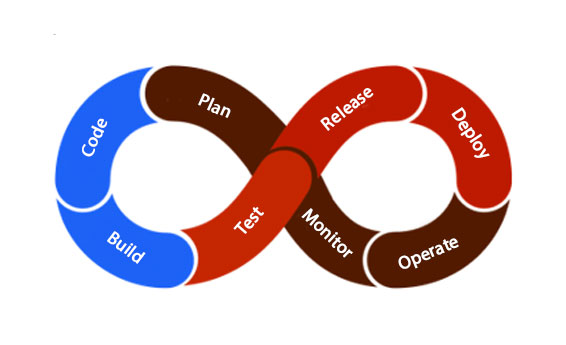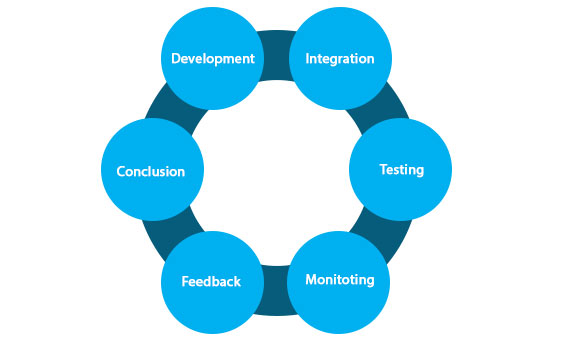Updated May 25, 2023
Introduction to DevOps Lifecycle
The development and operation teams collaborate on tasks to achieve faster software delivery in the DevOps Lifecycle, which comprises a set of phases. DevOps follows specific processes that include code, build, testing, release, deploying, operating, monitoring, and planning. DevOps lifecycle follows various phases: continuous development, integration, testing, monitoring, and feedback. Each phase of the DevOps lifecycle is associated with some tools and technologies to achieve the process. Business requirements drive implementation of commonly used tools, some of which are open source. As a result, the DevOps lifecycle is easy to manage and helps deliver quality.
DevOps Lifecycle
Let’s discuss the DevOps lifecycle to understand how it performs all the tasks. Below is the diagram which shows the structure of the DevOps lifecycle.
1. Code: The first step in this DevOps lifecycle is coding. In this step, the developers write the code on any platform to develop the product for a customer.
2. Build: The second step is to build where the basic version of the product is built using a suitable programming language.
3. Test: The third step test where the built products are tested using the automation testing tools such as Selenium web driver, selenium RC, Bugzilla, etc.
4. Release: This step involves planning, scheduling, and controlling the built process in a different environment.
5. Deploy: All the deployment products and files are executed on the server.
6. Operate: After the deployment of the product or application, it is delivered to the customer for use where he uses that product or application for daily life purposes.
7. Monitor: In this step, the delivered products or application to a user has been monitored to note any uptime and downtime failures or errors.
8. Plan: After monitoring, it gathers all the information and feedback from the customer and plans the changes needed to improve it.
Different Phases of DevOps Lifecycle
Below is the diagram showing various phases of the DevOps lifecycle.
Let’s discuss the phases of the DevOps life cycle to understand it in a better manner.
1. Continuous Development
In this development phase, the team develops objectives that must be delivered through the application. Once these project objectives are finalized, the development process of coding has been started. After development, it transfers to the next phase. As DevOps follows continuous development, it also works on the previous application to make changes according to the feedback and to meet the requirements.
2. Continuous Integration
After continuous development, the team enters the continuous integration phase, planning various tests for the upcoming phase. It helps us to find out whether the developed application meets the desired requirements or not.
Continuous integration is a seamless process leading to the next phase inefficiently.
3. Continuous Testing
The developed application is tested using automation tools in the continuous testing phase. Testers test the applications using different test cases and give results about various aspects of the product or application. The development team receives the results and uses them to improve the quality of the product or application.
4. Continuous Monitoring
Throughout the DevOps lifecycle, teams closely observe and record applications or products using various monitoring tools such as Splunk, ELK Stack, Nagios, and similar ones. This phase enables the identification of problem areas that require further analysis and improvement to enhance the working of the application or product. And if there are any problems, they will give them to the development team to solve them and detect and fix the bugs. This phase will focus on optimal performance and service uptime.
5. Continuous Feedback
By analyzing the results from all phases, including monitoring, testing, and others, the development of a product or application can be continually improved. This continuous feedback phase carries out this process. This phase comes in between the development and operation phases of the next version of the product or application.
The continuous feedback phase holds great importance in the DevOps lifecycle, as it provides feedback on the product or application after development and before delivery to the customer. So it is easy to remove that errors and improve the efficiency of the product or the application. It saves the time of the organization.
Advantages and Disadvantages
Below are the advantages and disadvantages of the DevOps lifecycle:
Advantages
- This method is easy to implement, and tasks can be arranged easily.
- Because of its rigid model, DevOps is easy to manage.
- Here, constant monitoring and debugging occur; hence it is less vulnerable and has fewer loopholes for errors.
Disadvantages
- This lifecycle may not be suitable when working with complex and object-oriented models.
- This method does not accommodate changing requirements.
Conclusion
It is an efficient way of developing the application or product. It improves the organization’s efficiency and saves time by allowing the users or customers to directly contribute to the development process of the product or application through sharing continuous feedback.
Recommended Articles
We hope that this EDUCBA information on “DevOps Lifecycle” was beneficial to you. You can view EDUCBA’s recommended articles for more information.





